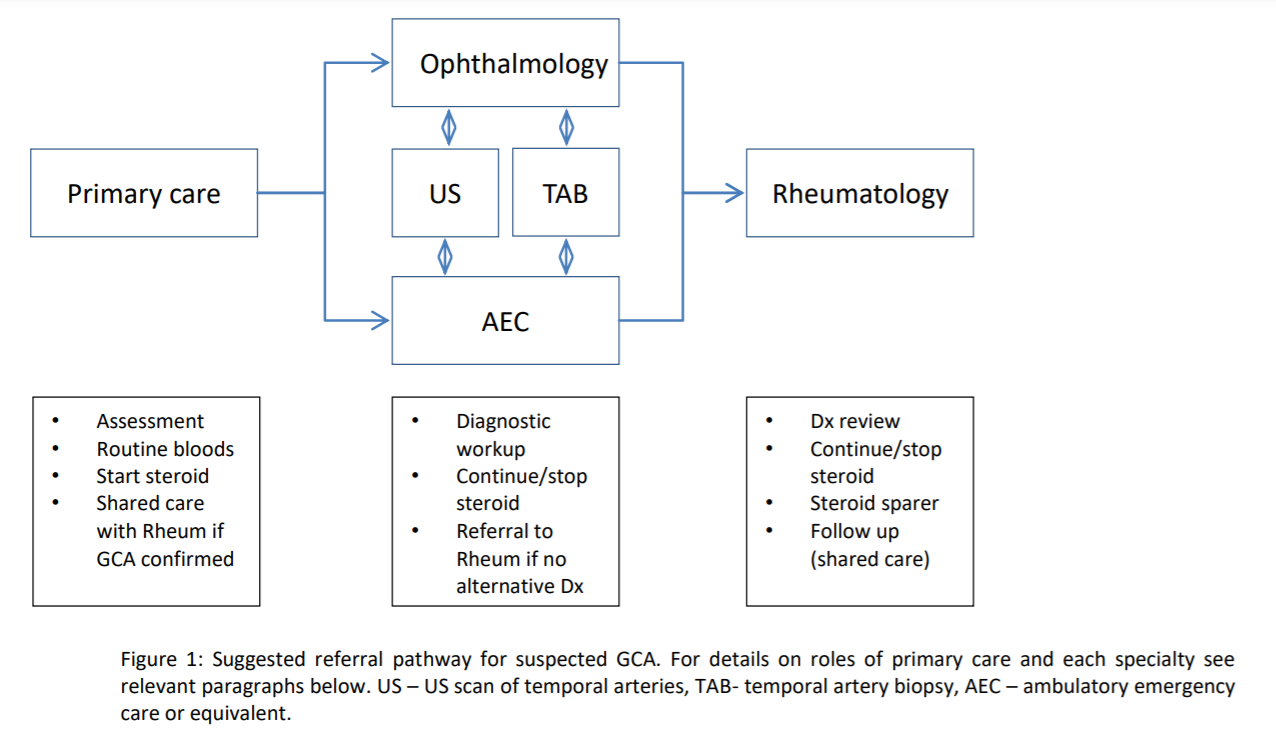GCA should be suspected:
- In individuals over 50 years old (usually over 60 years old) with new onset headache
- And other typical symptoms and signs of GCA (see list below)
- And elevated inflammatory markers
- And no alternative explanation for the patient’s presentation.
It is very rare for GCA to present with normal inflammatory markers and we expect either CRP, plasma viscosity (PV) or both to be raised. (There is no data on performance of plasma viscosity which has replaced ESR in NHS Highlands, but studies suggest less than 3% GCA cases have normal CRP and ESR).
There is no validated clinical scoring system to estimate the likelihood of GCA. In general, the more symptoms/signs present and in the absence of an alternative diagnosis, the greater the probability of GCA. None of the symptoms or signs is specific or pathognomic for GCA, and its mimics include many other local, systemic, infectious and malignant conditions. Patients with suspected GCA will therefore require further work-up to confirm a diagnosis.
GCA is a medical emergency requiring urgent specialist assessment but investigations should not delay initiation of steroid treatment if GCA is strongly suspected.


